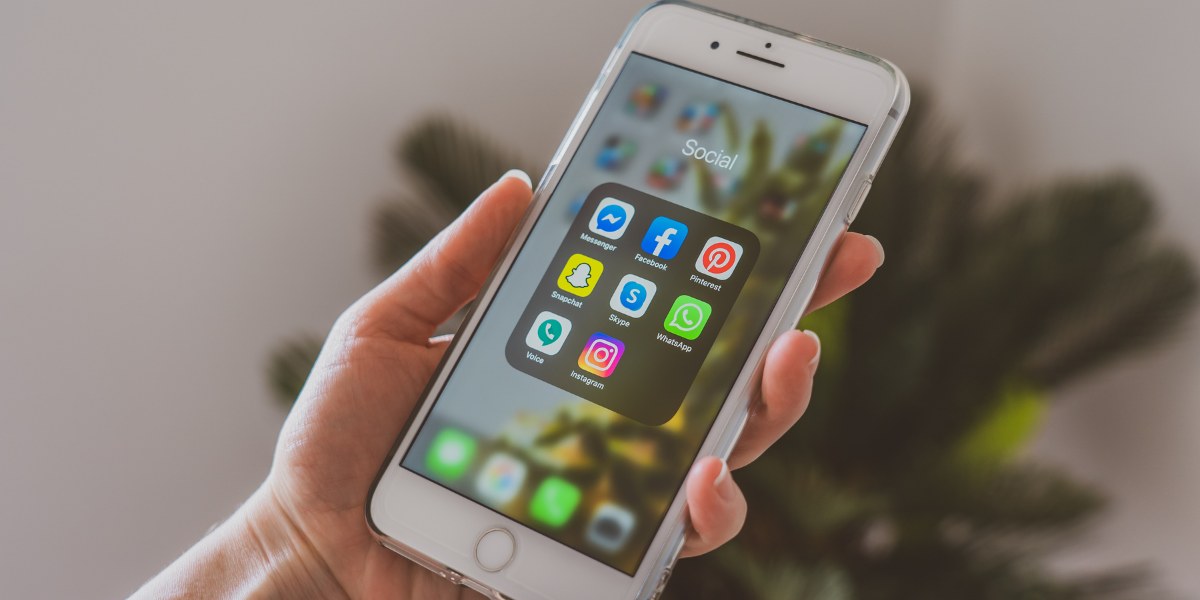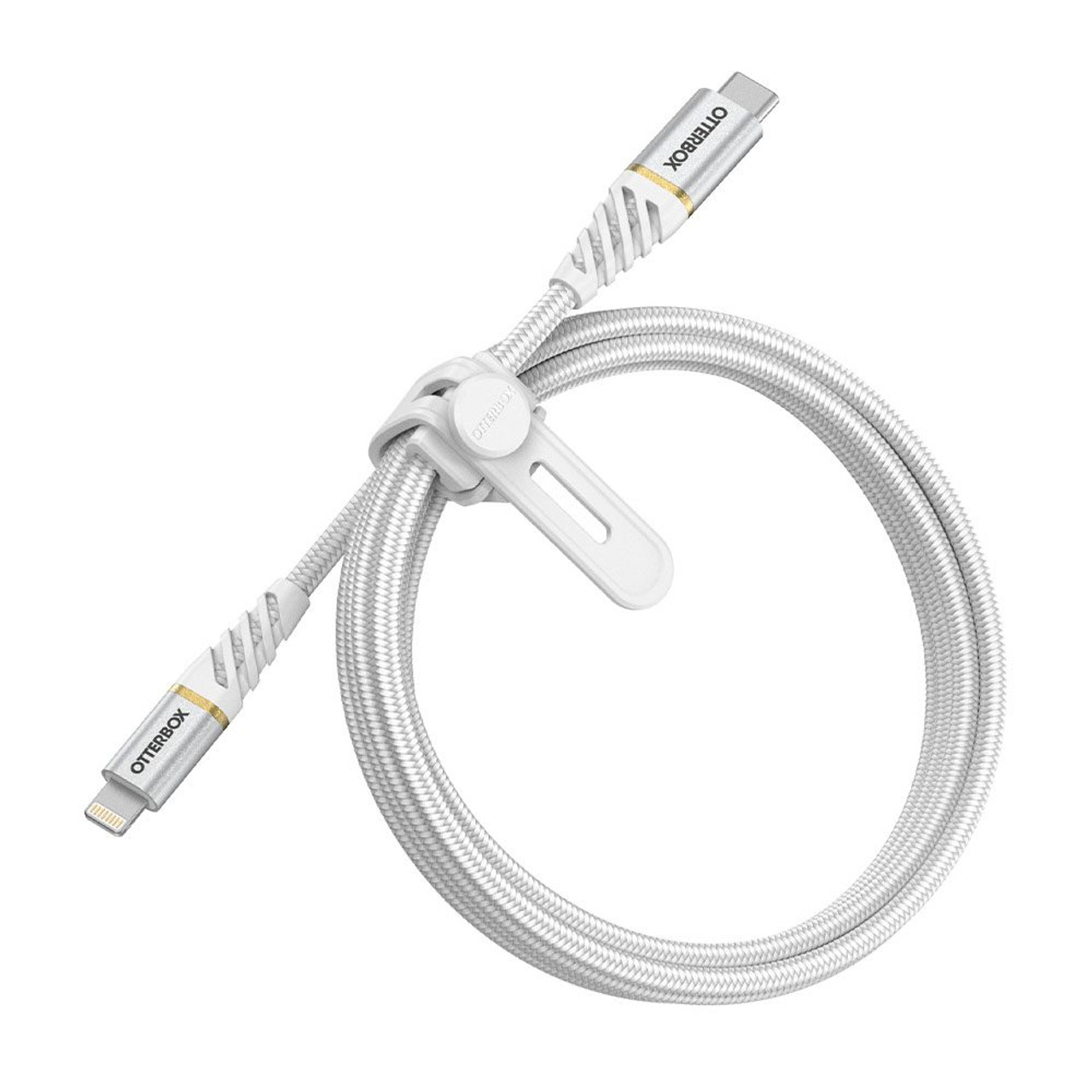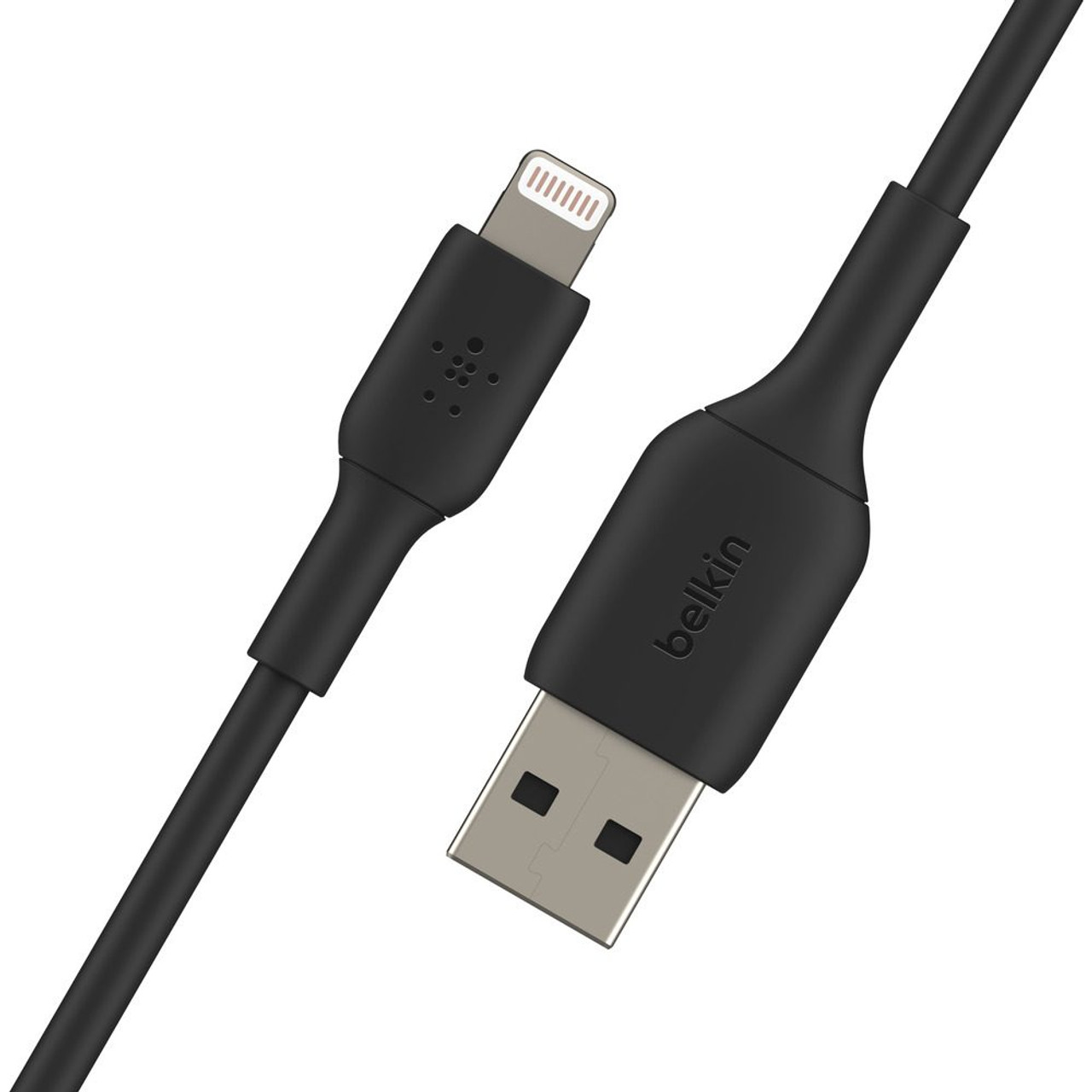Does the Charging Cable You Use Really Matter? Find Out Now!
Posted by iCoverLover on Jun 05, 2023
Are you a charging cable snob? Always searching for that perfect cable? Well, look no further than this blog post for the answers you seek regarding whether the charging cable you use does, in fact, matter. We’ll dig into all the gritty details of wires, amps, and another electrical mumbo jumbo, so you can confidently power your tech with the proper cable. We all know the horror stories of split, broken, or faulty charging cables; lose your charger, and it’s like losing a…lifeline? Either way, you’re lost without it, so let’s explore why the cable you use does, in fact, matter.
Yes, using a higher-quality charging cable can help improve the overall performance of your device and increase its battery life. If you are looking for a longer-lasting and more reliable charging solution, it is best to opt for cables that are certified by your device manufacturer.

What Does the Charging Cable Matter?
So, does the charging cable you use really matter? The answer is both yes and no. Many studies done on the subject argue that using a high-quality cable can improve the speed of your device's charge, as it generally offers more current and voltage and can handle heat better than an off-brand or cheap knockoff. On the other hand, if you’re simply charging a low-power device like an iPod or a low-end smartphone, then such brands and cable types likely won’t make any difference in performance.
It should be noted, however, that data transfer speed gained through USB connections also depends upon your cable type—so if transferring files quickly between two devices is important to you, then buying a quality cable may make a difference.
Overall, whether or not you need to invest in a specific charging cable will all depend on what kind of device you have and what your particular needs are when it comes to battery power and data transfer speed. To learn more about the specifics of current rating and voltage, read on—we can explain further in our next section.
- According to a study conducted by UL Verification Services, low-quality or counterfeit USB-C cables increased the time taken to fully charge a device by up to 50%.
- Data from Statista shows that 28% of people worldwide think it is important to have an original charger for their device.
- A 2020 survey found that only 14% of millennials used the official charging cables provided with their electronic device purchases.
Current Rating and Voltage
We have already discussed why the charging cable you use does matter, and now let’s take a closer look at the current rating and voltage. The current rating of a cable is important because it indicates how much electric energy it can safely transfer from the charger to your device. When the electric current that reaches your device is too high, it can cause damage to the interior components. Voltage, on the other hand, determines how quickly your device recharges. If the rate of charge is low due to a cable with low voltage, then it may take longer for your device to become fully charged.
The debate between using an original OEM (Original Equipment Manufacturer) or aftermarket accessories arises when dealing with current rating and voltage. Some may find the cost of an OEM accessory too high; however, you get what you pay for when it comes to buying quality charging cables with higher ratings of current and voltage compliant with your device’s specifications. Aftermarket gadgets are cheaper but often lack durability and materials used for some of their accessories which might lead to electrical issues such as short-circuiting or not functioning at all. Thus both sides of the argument have valid points to consider before deciding on charging cables for your device.
In summary, it’s important to know both the current rating and voltage of a charging cable before deciding on a purchase as both have an impact on how quickly your device charges and whether it remains safe from any electrical damages during use. Now that we have delved into this topic, let's transition our focus onto how these charging cables may affect your device in terms of its performance and other concerns.
How Do Charging Cables Affect Your Device?
Whether or not the charging cable used to supply power to a device affects its performance and longevity is a point of debate among consumers. On one hand, there are those that argue that using the right cable can reduce risks of safety issues, slow charging times, and durability issues. On the other hand, there are some that contend that as long as the current rating and voltage fall within the required parameters for their device, then no matter what type of cable is used, the device will perform normally.
Proponents of this argument often cite examples from various studies done to test the performance of various cables. In one study done by CNET (2017), results showed that cheap charging cables produced far less power than certified cables did even when plugged into a wall socket at higher rates. This indicates that good quality cables may be better at protecting devices from surges in electrical current due to their ability to provide more accurate amounts of power to the device than a cheap third-party cable would be able to do.
While it may remain unclear whether or not the current rating and voltage alone suffice when it comes to powering devices safely and efficiently, it appears that choosing quality cables often associated with brand names and certifications do come with certain advantages regarding performance and protection. As such, making sure your charging cables are up to par should always be a priority for optimal results and peace of mind when powering your device, thus transitioning smoothly into our next discussion on USB adapters and their quality effects on devices connected to them for data transfer and charging.
USB Cables and Quality Matters
When it comes to USB cables, quality matters. Poorly-made charging cables can lead to many issues that may affect your device. For example, low-quality USB cables may not provide adequate power or sufficient data transmission speeds. This could lead to slow charging or could even potentially fry your device’s battery. Even if a poor-quality cable isn’t faulty, it can also be extremely unreliable. In extreme cases, the cable can even start a fire because of damaged insulation or fraying wires.
On the other hand, some may argue that USB cables are all basically just thin tubes of plastic and don't really affect device performance when compared to traditional wall chargers and adapters. While this is technically true for most devices and applications, using a premium-powered USB cable can still greatly improve performance compared to some low-cost alternatives. A quality USB cable has better insulation, superior data transmission speed and higher voltage tolerance than a mediocre cable, ensuring reliable charging and fast transfer speeds without endangering the device's components.
So while you may be able to get away with just buying the cheapest USB cable available in most cases, there’s no doubt that investing in a premium cable will give you peace of mind and improved performance. After all, why risk frying your device with a subpar cable when you don't have to?
Now that you understand the importance of getting the right USB cables for your device, let’s look into what you should be looking for when shopping for one.
What to Look for in a USB Cable
When selecting a USB cable, there is no definitive answer as to which type is best as there are many important factors to consider. It is clear that not all USB cables are created equal when it comes to speed and power efficiency. To get the most out of these devices, users should aim to use high-quality material with large gauge wire. This helps maintain better data transfer or charge rate than a smaller gauge cable. Additionally, the type of connector matters too: micro-USB, mini-USB and USB C are the three primary types currently on the market. Micro-USB cables have a longer track record in consumer electronics and are still quite versatile for many charging needs. Meanwhile, a newer standard is also becoming increasingly popular: USB C allows for faster speeds and can handle much higher wattage yet requires specific connector ports and is not compatible with other types of wiring.
The debate about which type of USB cable offers the best performance still exists. Ultimately, the choice usually comes down to cost versus performance, with more expensive models providing an advantage in terms of longevity, compatibility with different devices and faster charging times. However, there are cheaper options available that may still be suitable for most users' needs without breaking the bank. One thing remains clear: quality matters when it comes to charging cables and it pays to invest in materials that will last longer and provide greater overall performance.
Now that we have discussed quality when it comes to cables and their connection ports, let’s take a look at another ubiquitous accessory: portable chargers. Portable chargers come in a variety of shapes and sizes but essentially offer an easy way for users to recharge their devices anytime, anywhere. They provide undeniable convenience for those who move about frequently or find themselves often away from an outlet or power source but need power for their device. Next up, we'll explore the differences between variations of portable chargers on the market today and discuss which ones may suit your particular lifestyle or needs best.
Portable Chargers and Cables
A good USB cable will keep your devices charged safely and efficiently, but what happens if you're away from an outlet and need a boost? Portable chargers are a great way to stay powered up without having to rely on a power source. However, selecting the right portable charger for your device is comprised of two key criteria – compatibility and safety.
The importance of compatible cables is obvious: if the connection isn’t secure or seamless, you won’t be able to charge your device properly. You wouldn’t want to use an old USB converter as it may not provide the necessary wattage for modern devices. Consider investing in a high-quality portable charger that connects to any type of power source and produces standout wattages for fast charging capabilities.
For optimum performance on the go, find portable chargers with more than one port so that you can connect multiple devices at once. Remember – go beyond just looking for compatibility – make sure you select a product that gives equal importance to quality and safety. That concluded it’s now time for an equally important concern: Safety.
How to Ensure Safety When Using Portable Chargers
As technology continues to advance and more devices are created that require reliable charging power, it’s important to ensure the safety of yourself, your devices, and the cables you are using. In regards to portable chargers and cables, there is an ongoing debate about whether the charging cable you use really matters— does a generic one work just as well as branded ones, for example? While this is up for debate amongst tech experts, there are some precautions one can take to ensure the safe usage of portable chargers.
For starters, it is best to choose chargers and associated accessories that are certified by the necessary authorities. This usually means they have been tested to meet industry safety standards, making them less likely to cause any harm. Of course, these tend to be more expensive than off-brand alternatives but their superior quality is often worth it in terms of reliability and overall safety. Additionally, only buy your charging accessories from reputable sources or stores with a good return policy— this will give you the assurance that you’re getting high-quality items.
It is also important to check the voltage rating of the charger; some rogue chargers may have inaccurate ratings which can lead to dangerous overheating and even fires. Furthermore, never leave portable chargers plugged in when not in use as this can pose a fire risk; instead, make sure it's disconnected. Finally, avoid using cords with exposed wiring whenever possible as these can present an electrocution hazard and should be replaced immediately if discovered.
Ultimately, the type of charger and cable you use really does matter when it comes to safe usage. Branded products with reputable certifications can be more expensive but they offer better protection against potential hazards such as short-circuiting. On the other hand, going with generic options may save you money but they lack consistent testing which could lead to issues down the line—despite potentially cheaper price tags. As always, however, research each product thoroughly before purchase and read all relevant instructions for maximum benefits.
Advantages of Using a Specific Type of Charging Cable
There are several advantages to using a specific type of charging cable. First and foremost, certain types of charging cables are designed to charge specific devices faster than others. For example, newer cables that support USB 3.1 or Type-C can provide faster charging than traditional USB 2.0 cables used to charge older phones or tablets. Also, some specialty charging cables are designed to be both durable and flexible, making them ideal for use in cramped areas or where the cable needs to bend around obstacles while staying secure. Finally, certain charging cables offer protection against surges, meaning your device is less likely to be damaged due to a power spike when you're plugging it in or charging it.
Can using the wrong type of charging cable damage my device?
The short answer is yes — using the wrong type of charging cable can damage your device. In some instances, it might not cause any damage, but in others, it can result in permanent damage to your device's circuitry or battery.
The main risk comes from certain cables having different types of connectors than the port your device uses. For example, if you're trying to charge an iPhone with a micro-USB cable, the difference in size and shape between the two connectors could cause physical damage when you plug it in. You run a similar risk if you use a USB Type-C cable with an iPhone – there simply isn't enough space for everything to fit correctly.
Another potential danger is that improper charging cables may not have the right kind of protection built-in to prevent overcharging or excessive current flow. This means your device could be receiving too much power and could potentially fry its internal components.
For these reasons, it’s important to make sure you are using the proper charging cable for your device in order to avoid any potential issues that could easily be avoided by choosing the right one.
Potential Downsides to Using the Wrong Charging Cable
The potential downsides to using the wrong charging cable are numerous. The most obvious is that it might not fit properly, leading to an unreliable connection that could cause malfunctioning or even damage to your device. Additionally, if the cable is rated for an outdated or lower voltage than your device requires, it may draw too much current and lead to overheating, which can cause electrical shorts and possibly fire. Furthermore, cheap or poorly-graded cables may contain inferior materials that degrade faster than those designed for long-term use, so you run the risk of having a poorly functioning charger or needing to replace it sooner.
Conclusion
The type and quality of your charging cable can have a significant effect on the charging speed, data transfer rate, durability, safety, and overall effectiveness of the charging process. Therefore, when you're next buying a charging cable, remember to take into account not only the type of connector you need but also the quality of the cable itself. The type and quality of your charging cable matters greatly. It's worth investing time and thought into choosing the right one, ensuring it is compatible, safe, durable, and capable of delivering efficient charging and data transfer. By doing so, you can enhance your device's performance, extend its lifespan, and ensure your own peace of mind. In this digital age, where our devices are practically extensions of ourselves, this small consideration can make a significant difference.

